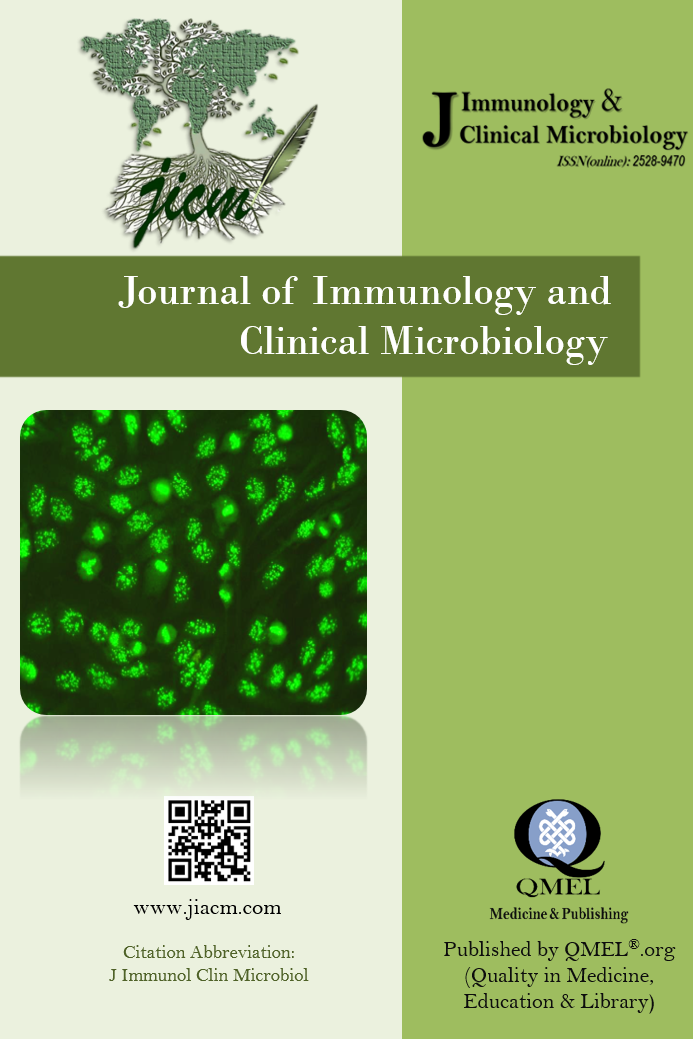Prevalence of vulvovaginal candidiasis and treatment with isoconazol nitrate
Prevalence of vulvovaginal candidiasis and treatment with isoconazol nitrate
Background: Vulvovaginal candidiasis (VVC) was an infection caused by Candida species that affects millions of women every year. Candida albicans was the main cause of VVC. The development of VVC was usually attributed to the disturbance of the balance between Candida vaginal colonization and host environment by physiological or non-physiological changes. Several host-related and behavioral risk factors have been proposed as predisposing factors for VVC. Host-related factors include pregnancy, hormone replacement, uncontrolled diabetes, immunosuppression, antibiotics, glucocorticoids use and genetic predispositions. Behavioral risk factors include use of oral contraceptives, intrauterine device, spermicides and condoms and some habits of hygiene, clothing and sexual practices. Materials and Methods: A total of 448 women with vaginal infection were studied retrospectively. Yeasts were isolated from the samples of 140 patients with vulvovaginal candidiasis. Routine diagnostic methods were used. A total of 113 patients were included to our treatment protocol. Results and Conclusions: This study provides information about the current state of epidemiology and microbiology of VVC, as well as quite effective treatment of symptomatic and uncomplicated VVC with confirmed by laboratory results with isoconazole nitrate (a single dose of topical creams or vaginal ovules). We believe that all of them, as well as partner co-treatment and perineal hygiene increase the our success.
Keywords:
Vulvovaginal candidiasis, C. albicans Isoconazole nitrate,
___
- 1. Phass EB, Heseltine HC, Borts IH. Vulvovaginal Infection due to Candida albicans. Am J Obstet Gynecol. 1931; 21: 320.
- 2. Odds FC. Candida candidosis. 2nd. London, England: Baillière Tindall; 1988. p. 68-92
- 3. Sobel JD. Current Concepts: Vaginitis. N Engl J Med. 1997; 337:1896-1903.
- 4. Sobel JD, Management of Patients with Recurrent Vulvovaginal Candidiasis. Drugs. 2003; 63: 1059-1066.
- 5. Carlson P, Richardson M, Paavonen J. Evaluation of the Oricult-N Dipslide for Laboratory Diagnosis of Vaginal Candidiasis. J Clin Microbiol. 2000; 38(3): 1063-1065.
- 6. Dovnik A, Golle A, Novak D, Arko D, Takač I. Treatment of vulvovaginal candidiasis: a review of the literature. Acta Dermatovenerol Alp Pannonica Adriat. 2015; 24(1): 5-7.
- 7. Pirotta MV and Garland SM. Genital Candida species detected in samples from women in Melbourne, Australia, before and after treatment with antibiotics. J Clin Microbiol. 2006; 44 (9): 3213-3217.
- 8. Vermitsky JP, Self MJ, Chadwick SG, Trama JP, Adelson ME, Mordechai E et al. Survey of vaginal–flora Candida species isolates from women of different age groups by use of species-spesific PCR detection. J Clin Microbiol 2008; 46 (4): 1501-1503.
- 9. Spinillo A, Capuzzo E, Egbe TO, Baltaro F, Nicola S, Piazzi G. Torulopsis glabrata vaginitis. Obstet Gynecol.1995; 85 (6) :993-998. 10. Sobel JD. Vulvovaginal candidosis. Lancet 2007; 369:1961-1971.
- 11. van Schalkwyk J, Yudin MH, INFECTIOUS DISEASE COMMITTEE. Vulvovaginitis: Screening for and Management of Trichomoniasis, Vulvovaginal Candidiasis, and Bacterial Vaginosis. Journal of Obstet And Gynaecol Can. 2015; 37 (3): 266-274.
- 12. Sobel JD. Vaginal infections in adult women. Sex Transm Dis. 1990; 74: 1573-1601.
- 13. Watts DH, Springer G, Minkoff H, Hillier SL, Jacobsen L, Moxley M, et al. The occurence of vaginal infections among HIV-infected and high-risk HIV-uninfected women: longitudinal findings of the women’s interagency HIV Study. J Aquir Immune Defic Syndr. 2006; 43 (2): 161-168.
- 14. Acs N, Banhidy F, Puho E, Czeizel AE. Teratogenic effects of vaginal boric acid treatment during pregnancy. Int J Gynaecol Obstet. 2006; 93;55-56.
- 15. Brown D. Therapeutic alternatives and new treatment Modalities in vulvovaginal candidiasis. J Rep Med. 1986; 31: 653.
- 16. Sobel JD, Kapemick PS, Zervos M, Reed BD, Hooton T, Soper D. et al. Treatment of Complicated Candida vaginitis: comparison of single and sequential doses of flucanozole. Am J Obstet Gynecol. 2001; 185: 363-369.
- 17. Hong E, Dixit S, Fidel Pl, Bradford J, Fischer G. Vulvovaginal candidiasis as a chronic disease: diagnostic criteria and definition. J Low Genit Tract Dis. 2014; 18(1): 31-8.
- 18. Spott J, Sevcikovȧ A, Matýsek P Jr. Diagnosis And Treatment of Chronic Vaginal Candidiasis. Ceska Gynekol. 1999; 64 (5): 316-22.
- 19. Evans EG. Diagnostic laboratory techniques in vaginal candidosis. Br J Clin Pract Suppl. 1990; 71: 70-72.
- 20. Engberts MK, Korporaal H, Vinkers M, van Belkum A, van Binsbergen J, Lagro-Janssen T, et al. Vulvovaginal candidiasis: diagnostic and therapeutic approaches used by dutch general practitioners. Eur J Gen Pract. 2008; 14 (1): 30:3.
- Yayın Aralığı: Yılda 4 Sayı
- Başlangıç: 2016
- Yayıncı: Erkan YULA
Sayıdaki Diğer Makaleler
Prevalence of vulvovaginal candidiasis and treatment with isoconazol nitrate
